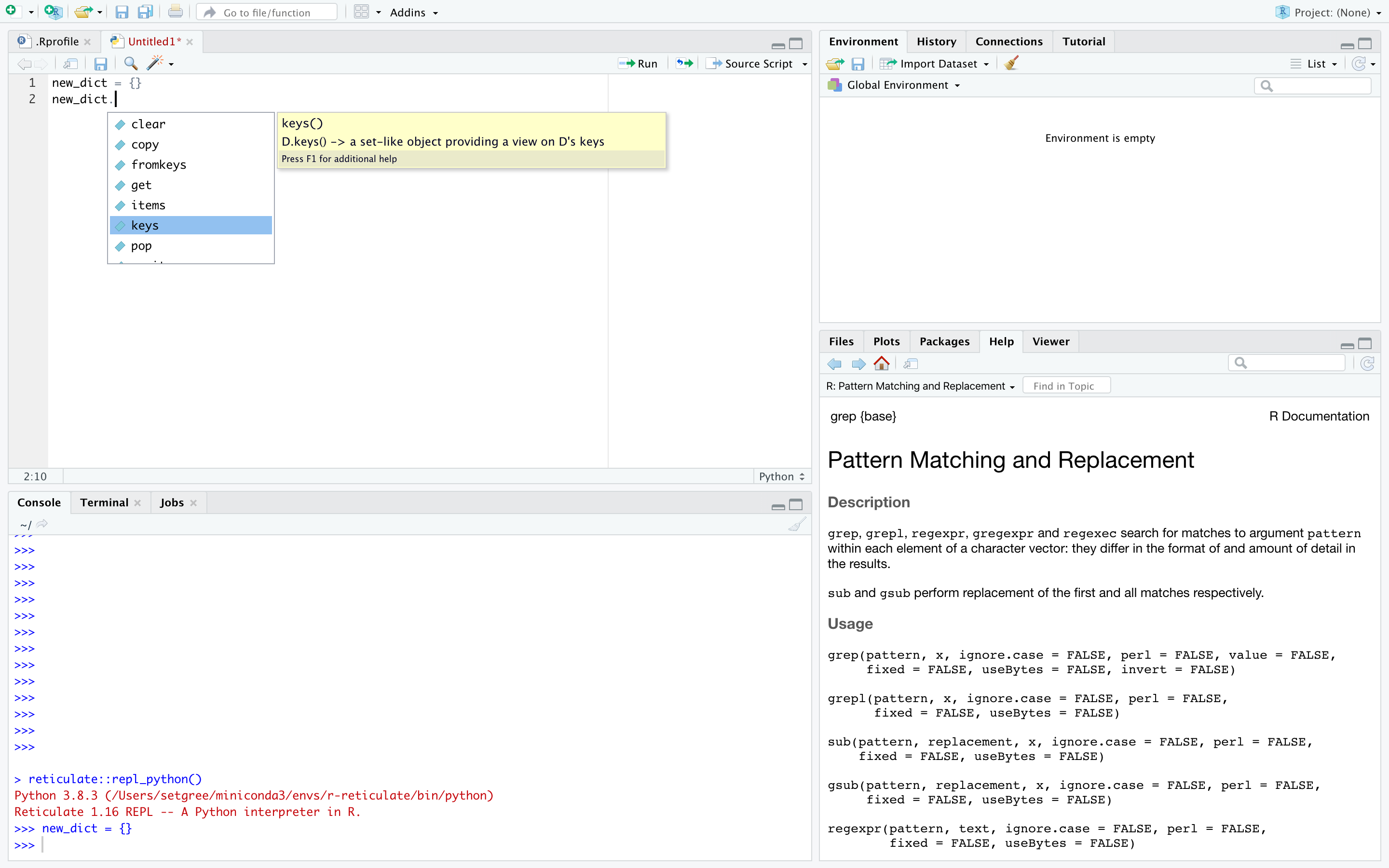

# libpython: /Users/jfranco1/anaconda/envs/r-reticulate/lib/libpython3.6m.dylib It should be 3.6… py_config() # python: /Users/jfranco1/anaconda/envs/r-reticulate/bin/python We can have a final check of the Python version being used. If changing the conda environment doesn’t work, try changing the path direclty using: use_python("Path.", required=TRUE) The same is true whenever you type py_config() instead of py_discover_config(). This means that you need to restart R if you want to change the Python version. Once you run use_condaenv("relevantenv") Python is loaded. If the Python version is not the one from the relevant anaconda environment change the environment by typing use_condaenv("relevantenv") It might be the case that you had an older Python version installed and that reticulate is pointing to this older version (remember you need a recent version of Python - e.g Python 3.6.5-). Once installed we need to call in the package: library(reticulate) Now you are ready to install the reticulate package: install.packages("reticulate") Install RStudio v1.2 preview release - The new version of RStudio will fix some bugs.

In order for the current package of reticulate to work out of the box I recommend to follow these instructions: You have lots of deployment options including our own cloud hosting or (open source and commercial) self-hosted server software, or anywhere that hosts FastAPI apps, like Hugging Face or Heroku.Reticulate is quite recent and many bugs with RStudio have been solved in the last month, so I recommend installing the latest versions of everything we need. Shiny for Python is built on top of the modern Python web stack, using Starlette and asyncio. You can even embed live Jupyter widgets in your Shiny apps.Īnd any data source that’s available to Python is also available to Shiny, from the smallest SQLite file to the largest Snowflake data lake.

It’s designed to work integrate with popular visualization packages like Matplotlib, Seaborn, Plotnine, and Plotly. Shiny works with the Python data science packages you already use, like Pandas, NumPy, scikit-learn, and Polars. Or for ultimate flexibility, write your own HTML markup and CSS. Get started with Bootstrap and add your own customizations. Shiny is built from the ground up to support custom layouts, as simple or complex as you like. PowerfulĬreate highly interactive visualizations, realtime dashboards, data explorers, model demos, sophisticated workflow apps, and anything else you can imagine- all in pure Python, no web development skills required. Shiny makes it easy to build interactive web applications with the power of Python’s data and scientific stack.


 0 kommentar(er)
0 kommentar(er)
